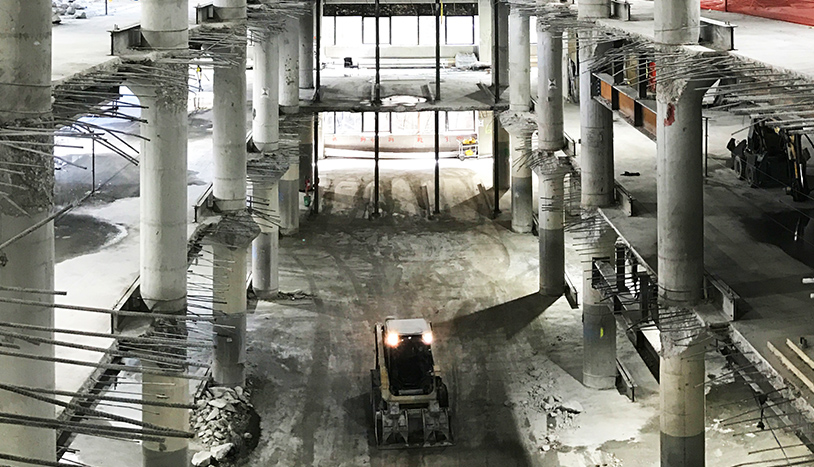When organizations expand across multiple floors, one design question often takes center stage: should you invest in a feature stair? These architectural focal points can boost movement, spark collaboration, and make a strong brand statement—but they also come with budget, space, and design complexities. Drawing on our experience across industries, we outline the trade-offs and smart alternatives to help you decide if a stair is the right fit for your workplace vision.
By Nicola Forest, Head of Sustainability, Structure Tone LondonSustainability continues to be a hot topic. So now that…
Zero Waste Week, held annually on the first Monday of September, is a global campaign to reduce landfill waste, preserve resources, and protect the environment. This year, STO Building Group’s Sustainability team joined the movement with a special three-part Building Conversations podcast series exploring material circularity in the AEC industry.
From design through demolition, our teams are working with partners across the U.S. to reduce waste, repurpose materials, and push the industry toward a more circular future. Hosted by Jennifer Taranto, STOBG’s Vice President of Sustainability, each episode features conversations with clients, designers, and manufacturers on what’s working, what’s changing, and how to build a zero-waste mindset from the ground up.
By Jenn Taranto, Vice President, Sustainability, STO Building Group As the construction and design industries…
In this episode of Ask the Expert, Michael Signorile, Exterior Envelope Supervisor at Pavarini McGovern, explores the future of building façades, from design reviews to advanced technologies like BIPV and electrochromic glass, offering strategies to achieve high-performance, energy-efficient, and visually striking results.
By Jenn Taranto, Vice President, Sustainability, STO Building Group In construction and sustainability, innovation is…
LED lighting may be efficient, but it’s falling short in elevator spaces. Learn why—and how to fix it—in this expert article by STOBG’s Michael Walsh.
On a corner once occupied by a parking lot at Columbia University Irving Medical Center, something groundbreaking is rising—literally and figuratively. The Roy and Diana Vagelos Innovation Laboratories, Columbia’s newest biomedical research building, is being built to lead not only in science, but also in sustainability.
STOBG’s Innovation team is constantly partnering with change-makers who are helping advance the way we build. STOBG’s chief innovation officer, Rob Leon, recently interviewed one of those visionaries: Sarah Buchner, CEO of Trunk Tools, a business that was founded out of real construction practice and is now at the forefront of AI for construction. In their conversation, Buchner describes how a deadly moment on the jobsite, a PhD, and a love for problem-solving translated into solutions that are revolutionizing project execution behind the scenes.
When a Fortune Global 500 healthcare company—recognized as one of Fortune’s “World’s Most Admired Companies”—needs help rolling out data centers, pharmacies, and full-floor tenant improvements across the country, they turn to a partner they trust. For over a decade, STO Building Group’s Global Services team has been that partner.
From the outside, the expansion at South Shore University Hospital (SSUH) looks ambitious, but it’s only upon entering that visitors will fully grasp its scale and sophistication. The new six-story, 187,000sf facility is a significant expansion project developed by Northwell Health, New York’s largest health system. The project includes 90 patient rooms, 10 operating rooms (six completed and four shelled for future use), prep and post-operative care areas, admitting services, and a two-story main lobby featuring high-end finishes.
